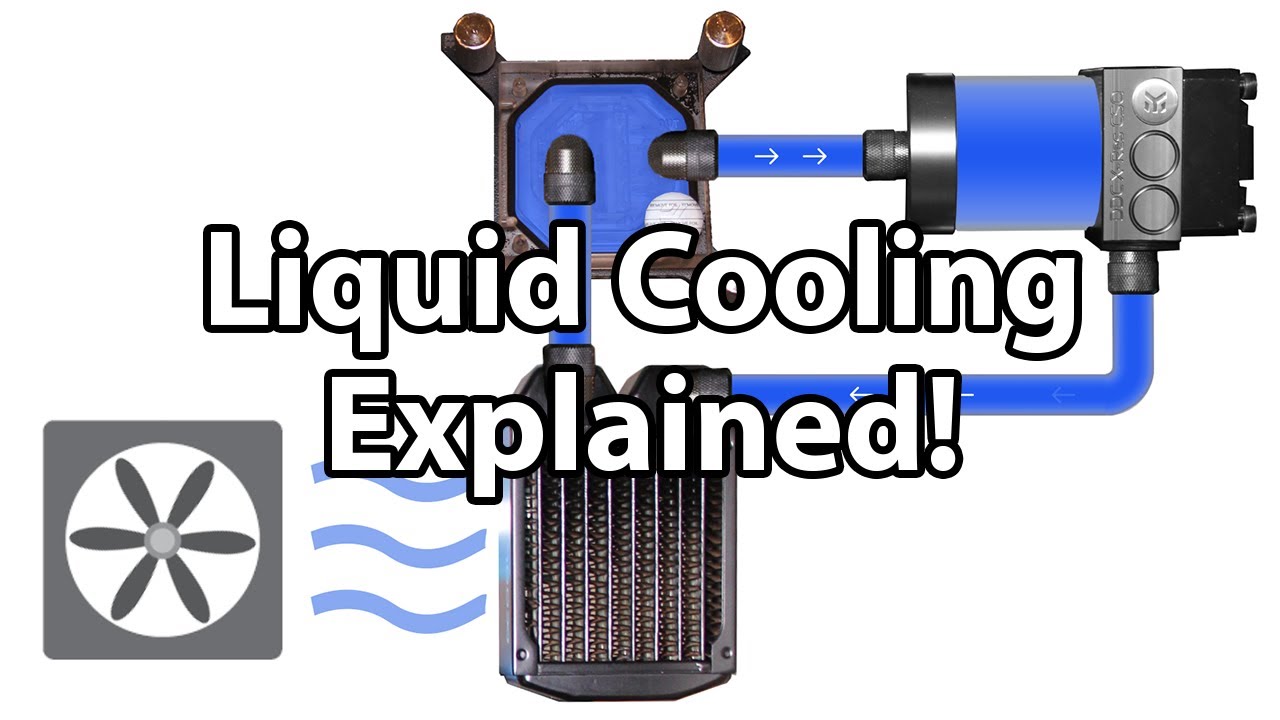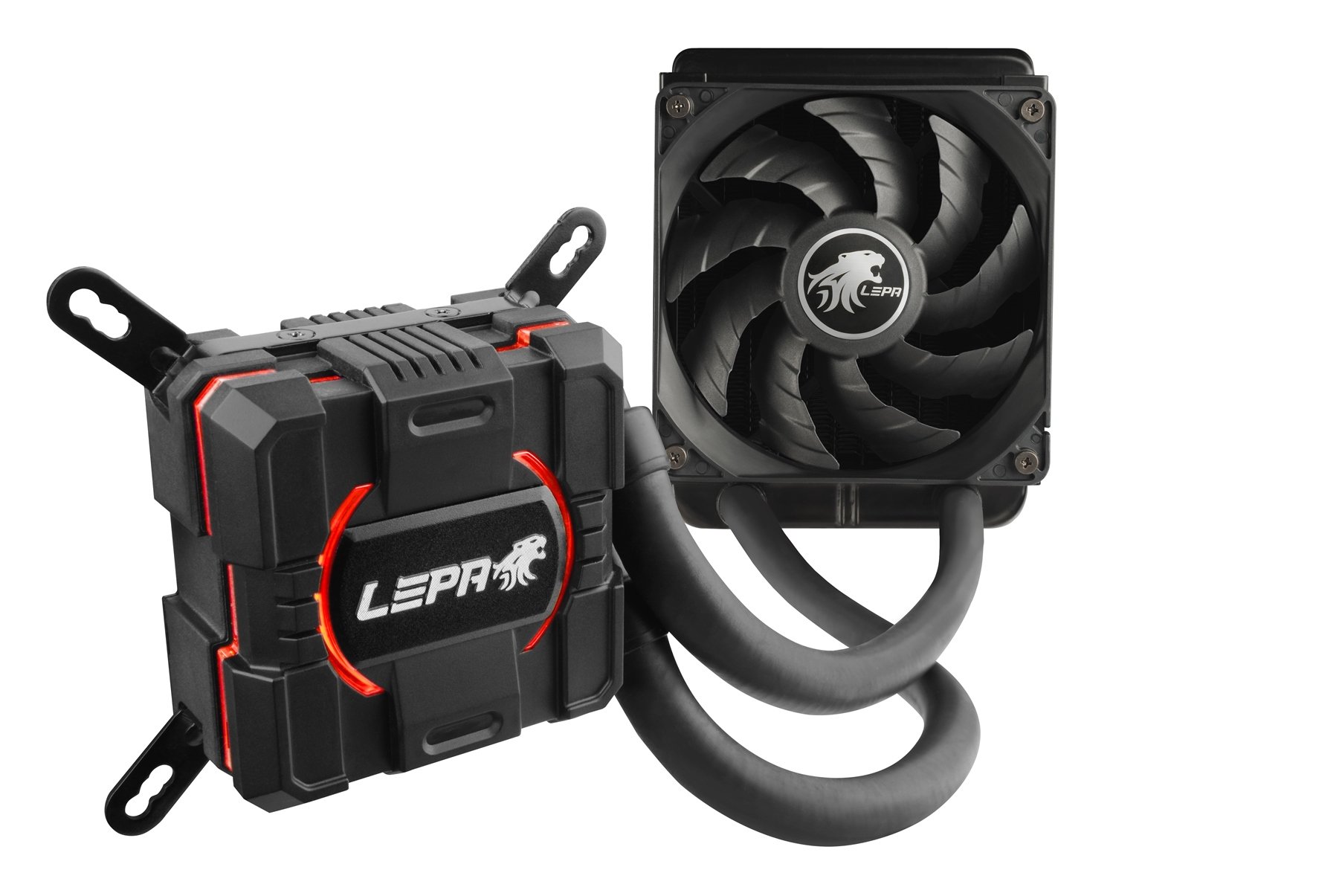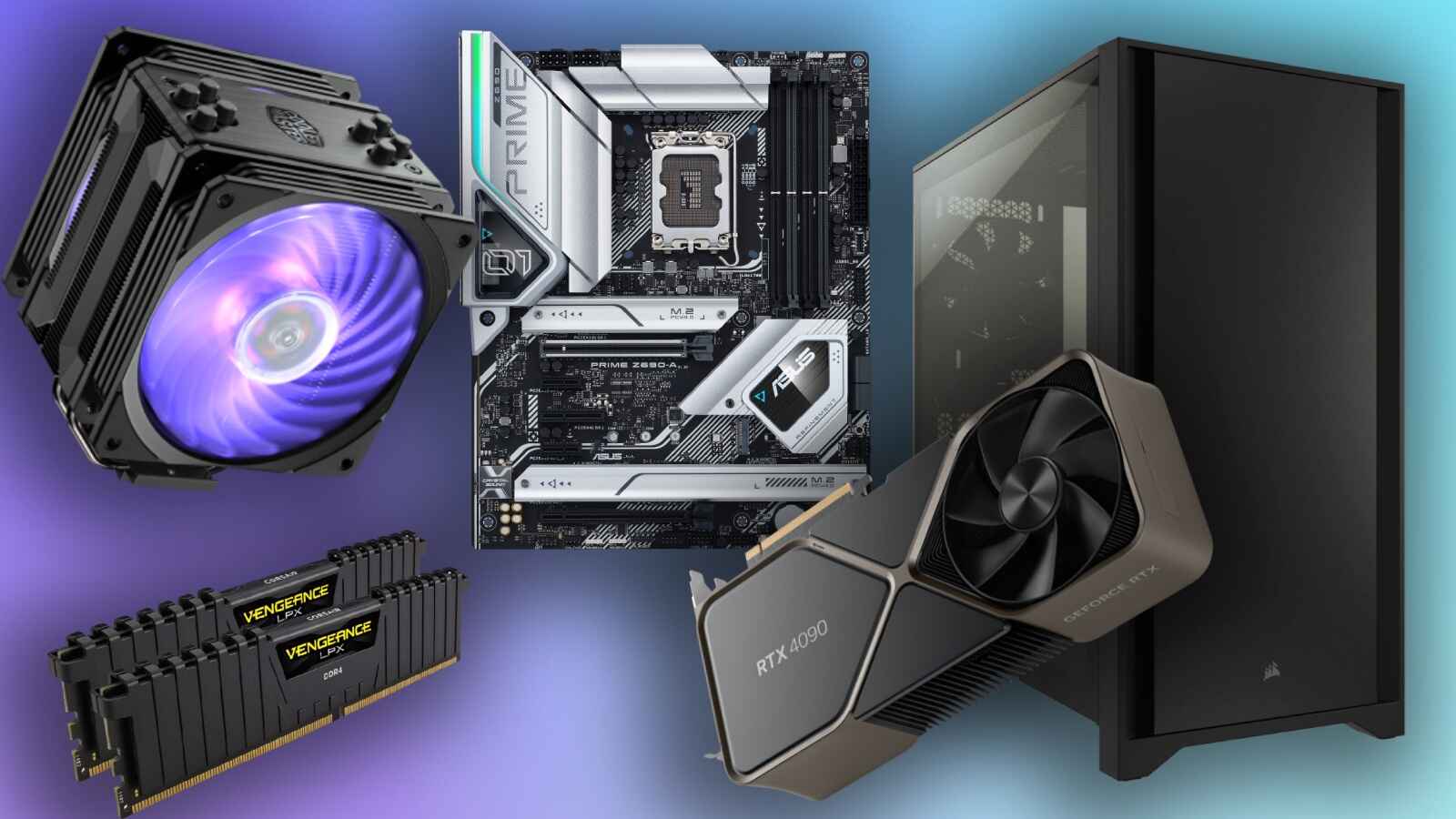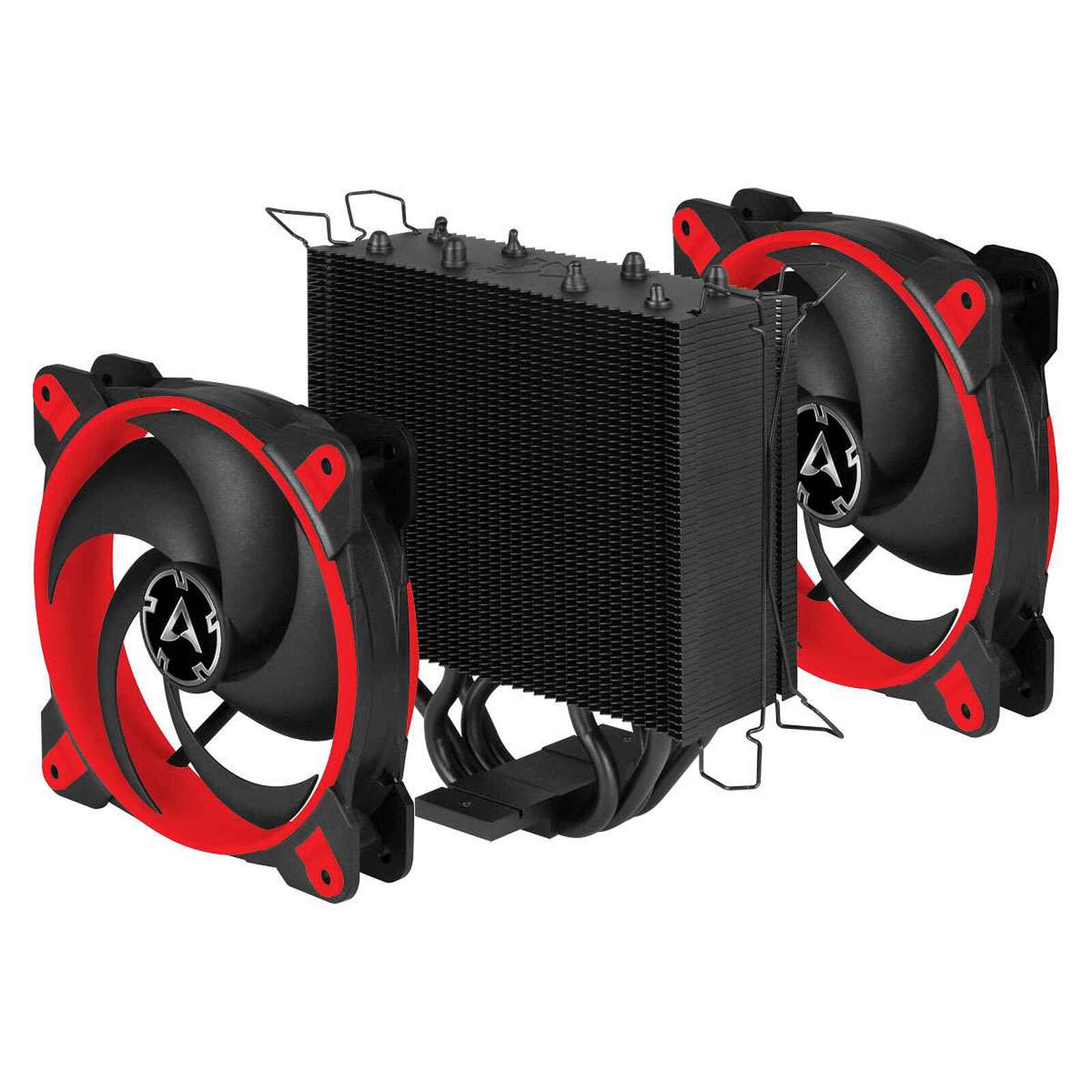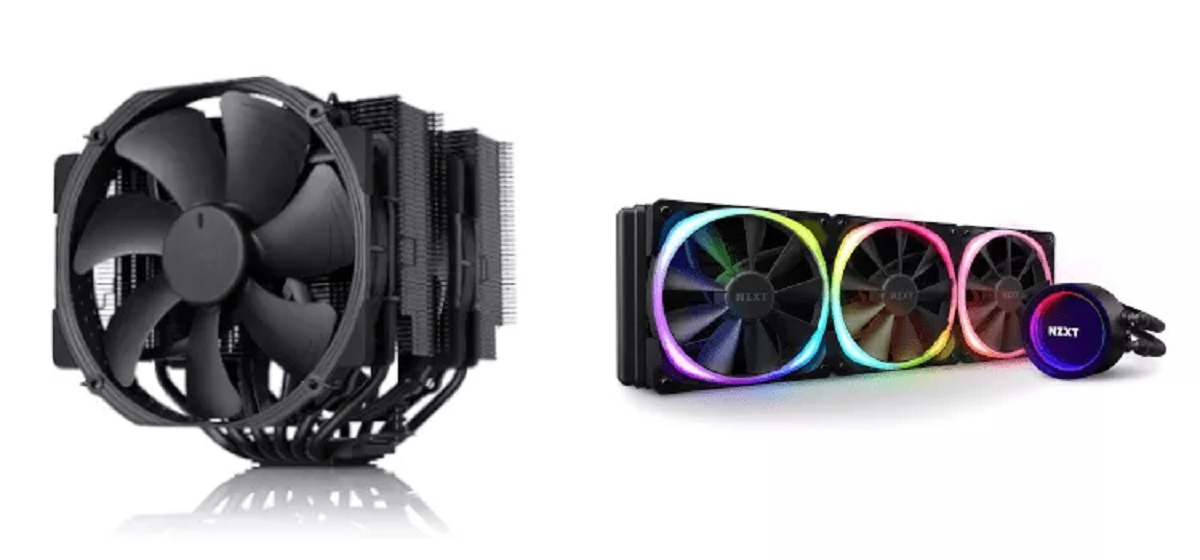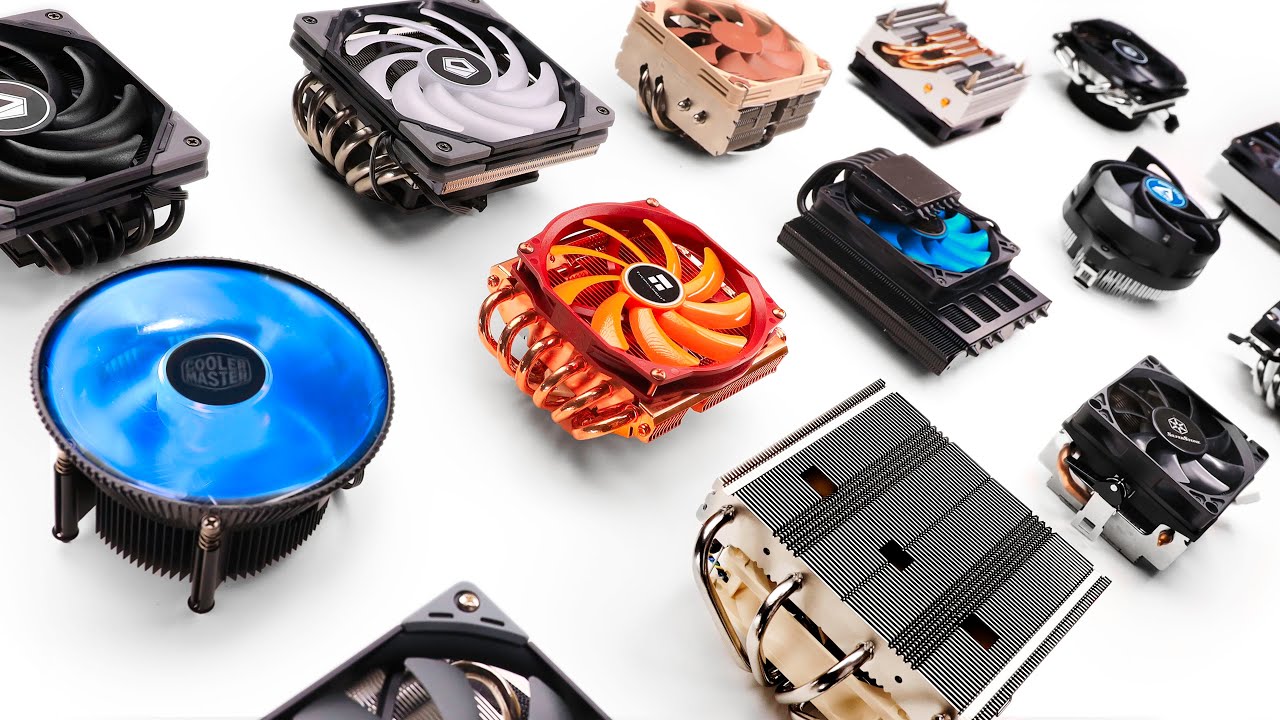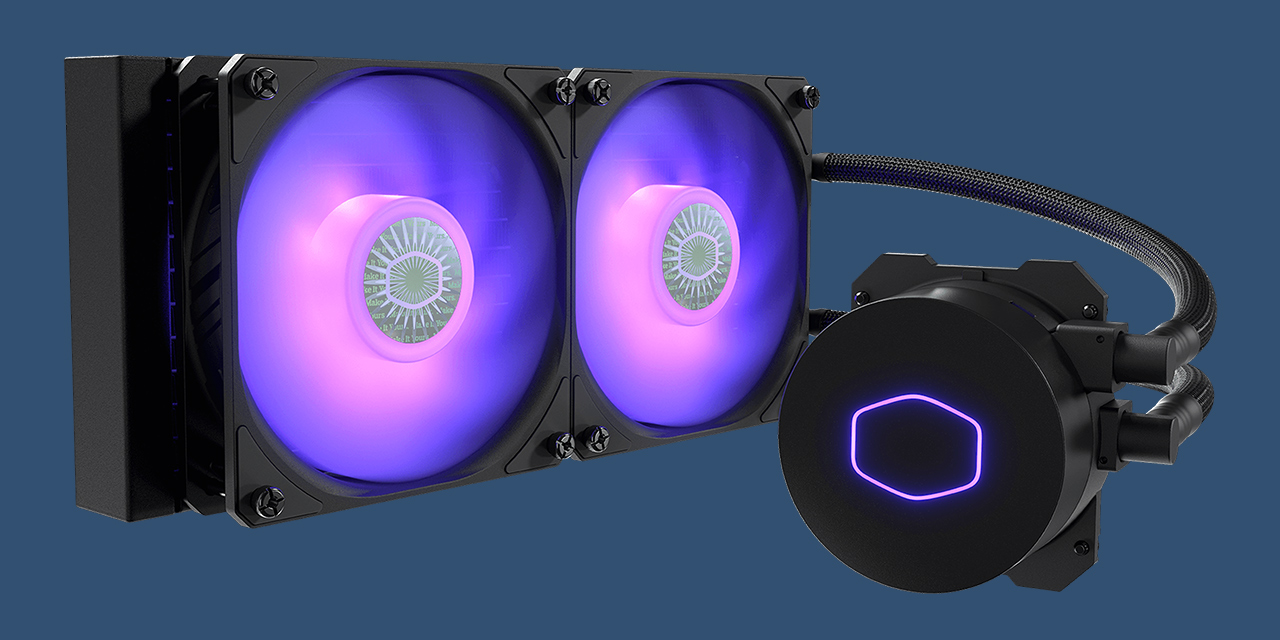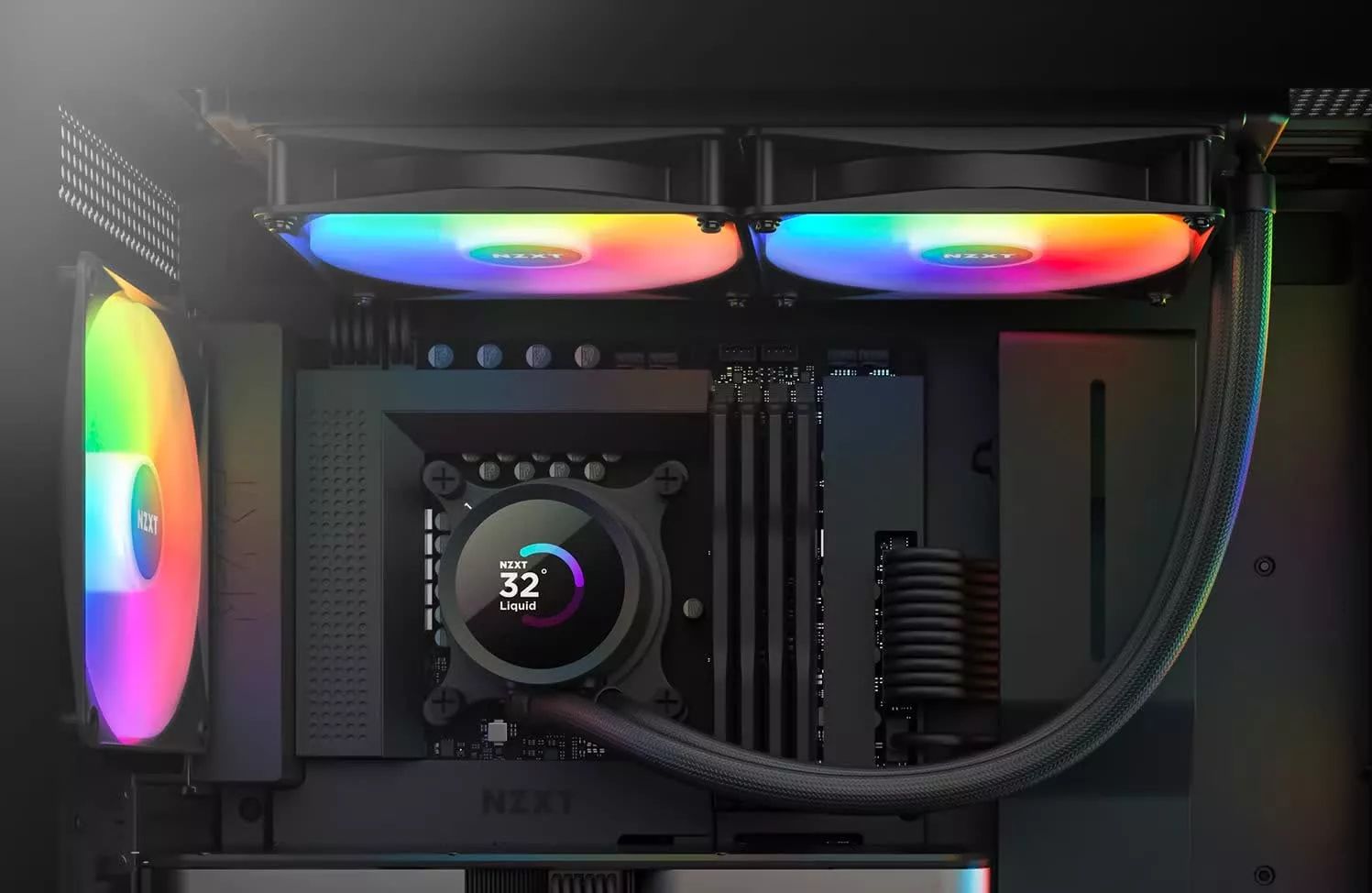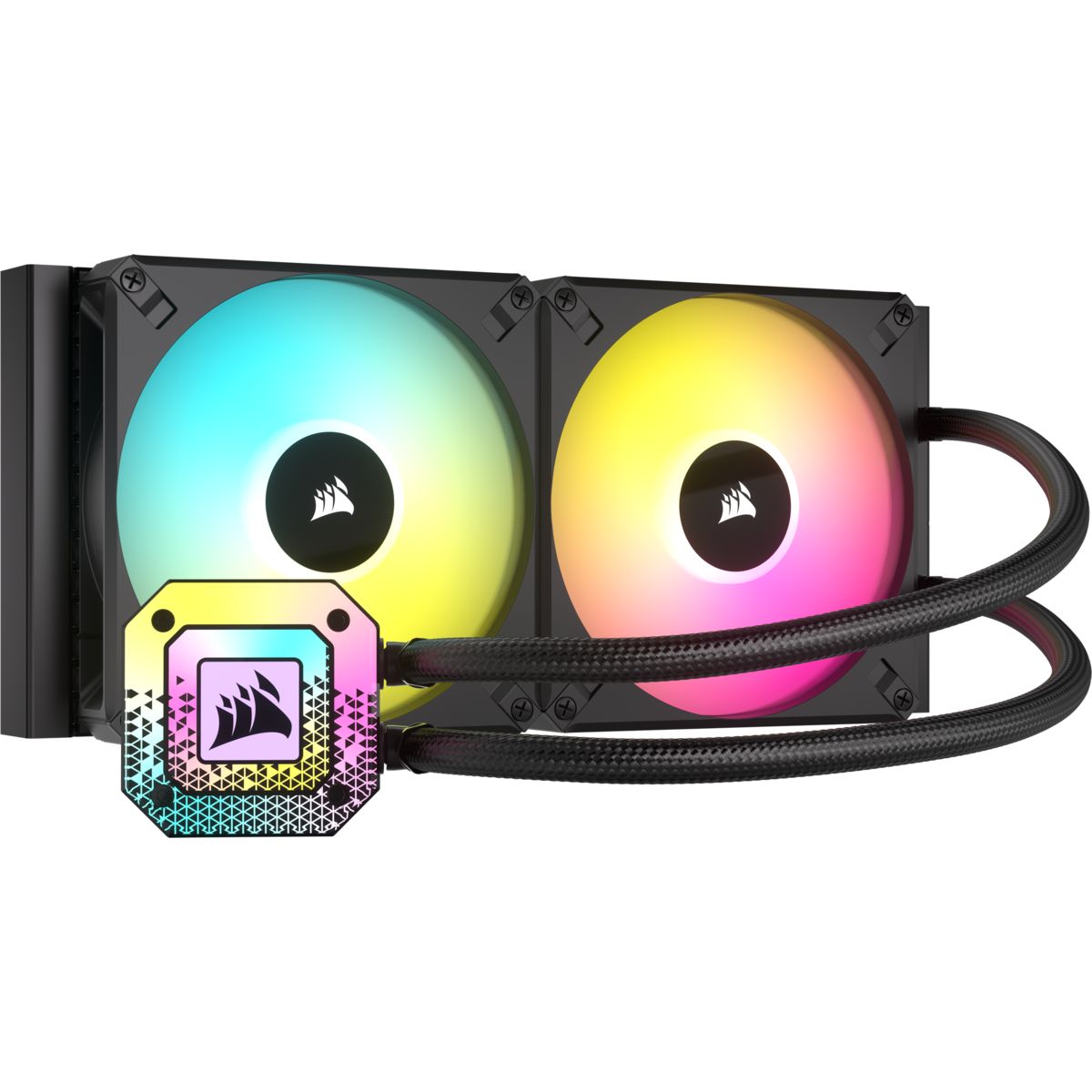Introduction
Welcome to the exciting world of CPU liquid coolers! If you’re a tech enthusiast or have been exploring ways to optimize your computer’s performance, you’ve likely come across the term “CPU liquid cooler.” With the advancements in technology, traditional air cooling methods are being replaced by more efficient and effective cooling solutions, and CPU liquid coolers are at the forefront of this revolution.
So, what exactly is a CPU liquid cooler? Put simply, it is a cooling system specifically designed to regulate the temperature of your computer’s central processing unit (CPU). The CPU is the brain of your computer, responsible for executing instructions and calculations that power every task.
A CPU liquid cooler consists of various components that work together to dissipate heat generated by the CPU more effectively than traditional air coolers. By employing a liquid-based cooling mechanism, these coolers provide superior thermal performance, enabling your CPU to operate at optimal temperatures even under heavy load.
In this article, we will dive into the inner workings of a CPU liquid cooler, explore how it handles heat dissipation, and discuss the benefits it brings to your system. We will also touch upon the installation and maintenance aspects to help you make an informed decision on whether a CPU liquid cooler is the right choice for you.
But before we delve into the technicalities, let’s take a closer look at the key components that make up a CPU liquid cooler.
What is a CPU Liquid Cooler?
A CPU liquid cooler, also known as a liquid cooling system or liquid CPU cooler, is a device designed to cool down the central processing unit (CPU) of a computer or other electronic devices. It is an alternative to traditional air cooling methods and offers several advantages in terms of cooling efficiency and performance.
At its core, a CPU liquid cooler consists of three main components: the CPU water block, the radiator, and the pump. The CPU water block is the component that comes into direct contact with the CPU, absorbing heat from it. It is usually made of copper or an alloy with high thermal conductivity to efficiently transfer heat from the CPU to the cooling liquid.
The cooling liquid, commonly referred to as coolant or working fluid, is responsible for carrying the heat away from the CPU to be dissipated. It is typically a mixture of water and ethylene glycol or propylene glycol, which has excellent heat transfer properties. This coolant is circulated through a series of tubes and channels, transferring the heat to the radiator.
The radiator is where heat dissipation occurs. It consists of a series of thin metal fins and tubes, which provide a large surface area for heat transfer. As the hot coolant passes through the radiator, the fins help dissipate the heat into the surrounding air. To facilitate the heat transfer process, fans are mounted on the radiator to blow cool air across the fins, further enhancing the cooling efficiency.
The pump, as the name suggests, is responsible for circulating the coolant through the liquid cooling system. It provides the necessary pressure to move the coolant from the CPU to the radiator and back. The pump is typically powered by a motor and is designed to operate quietly while ensuring an adequate flow rate to maintain optimal cooling performance.
Overall, a CPU liquid cooler works by actively removing heat from the CPU and dissipating it into the surrounding environment. This liquid-based cooling solution offers several advantages over traditional air coolers, including better thermal performance, reduced noise levels, and extended CPU lifespan.
Now that we have a basic understanding of what a CPU liquid cooler is and how it functions, let’s explore in detail how it effectively handles heat dissipation in the next section.
Components of a CPU Liquid Cooler
A CPU liquid cooler is a sophisticated cooling system that consists of several key components working in harmony to efficiently regulate the temperature of a computer’s central processing unit (CPU). Understanding these components will help you grasp the inner workings of a CPU liquid cooler and appreciate its superior cooling performance.
1. CPU Water Block: This component, also known as the cooling block, is in direct contact with the CPU. Made of high thermal conductivity materials like copper or an alloy, the CPU water block absorbs the heat generated by the CPU and transfers it to the cooling liquid. It is designed to provide optimal surface area contact with the CPU for efficient heat transfer.
2. Cooling Liquid: The cooling liquid, commonly referred to as coolant or working fluid, plays a crucial role in a CPU liquid cooler. It is a mixture of water and ethylene glycol or propylene glycol, which have excellent heat transfer properties. The coolant carries the heat away from the CPU to be dissipated by the radiator. It circulates through a series of tubes and channels.
3. Radiator: The radiator is responsible for heat dissipation. It consists of a network of thin metal fins and tubes, which provide a large surface area for the transfer of heat. The hot coolant flows through the tubes, and as cool air is blown across the fins by fans, the heat is dissipated into the surrounding environment. The radiator can be mounted within the computer case or externally, depending on the cooling system design.
4. Fans: Fans are an integral part of a CPU liquid cooler as they provide the airflow necessary for efficient heat dissipation. They are typically mounted on the radiator and blow cool air across the fins to facilitate the transfer of heat from the fins to the surrounding air. The fans can be static pressure fans, optimized for pushing air through dense fins, or high-volume fans, designed to move a large amount of air at lower speeds for quieter operation.
5. Pump: The pump is responsible for circulating the cooling liquid through the entire system. It provides the necessary pressure to move the liquid from the CPU water block to the radiator and back. The pump’s motor is designed to operate quietly while maintaining an adequate flow rate to ensure optimal cooling efficiency. Some advanced CPU liquid coolers feature variable speed pumps for fine-tuning the cooling performance.
6. Tubing: Tubing connects the components of the CPU liquid cooler and allows the coolant to flow between them. High-quality tubing is often made of materials like rubber or reinforced plastic to withstand the pressure and temperature of the coolant. It should be flexible enough for easy installation but sturdy enough to prevent leaks or kinks that could disrupt the flow of the coolant.
Understanding the components of a CPU liquid cooler gives you a solid foundation for comprehending how the system efficiently handles heat dissipation. In the next section, we will explore the intricate workings of a CPU liquid cooler and how it effectively cools down the CPU.
How Does a CPU Liquid Cooler Work?
A CPU liquid cooler, with its advanced design and components, is an innovative cooling solution that effectively regulates the temperature of a computer’s central processing unit (CPU). Let’s explore the inner workings of a CPU liquid cooler and understand how it efficiently cools down the CPU.
1. Heat Dissipation: The process starts with the CPU generating heat during operation. The heat is transferred from the CPU to the CPU water block, which is in direct contact with the CPU. The high thermal conductivity materials of the CPU water block efficiently absorb and spread the heat across its surface. This transfer of heat occurs due to thermal conduction.
2. Liquid Circulation: The transferred heat is then conducted from the CPU water block to the cooling liquid inside the CPU liquid cooler. As the coolant comes into contact with the CPU water block, it absorbs the heat. This heat transfer occurs through a process called convection. The coolant now becomes heated and carries the thermal energy away from the CPU towards the radiator for dissipation.
3. Cooling Efficiency: The heated coolant flows through the tubing towards the radiator. The radiator consists of thin metal fins and tubes that provide a large surface area for dissipation. Fans mounted on the radiator blow cool air across the fins, facilitating the exchange of thermal energy. As the cooler air passes over the fins, the heat is transferred from the coolant to the surrounding air in a process known as convection. This cools down the coolant, preparing it to recirculate through the CPU liquid cooler once again.
This continuous circulation of the cooling liquid effectively removes heat from the CPU and maintains its temperature within the desired range. By utilizing a liquid-based cooling mechanism, a CPU liquid cooler can handle high heat loads more efficiently than traditional air coolers.
The CPU liquid cooler’s design and components work together to enhance the cooling performance and maintain optimal CPU temperatures. The effective heat dissipation and efficient liquid circulation of a CPU liquid cooler contribute to better overall system performance, especially during demanding tasks such as gaming, rendering, or other CPU-intensive operations.
In the next section, we will explore the various benefits of using a CPU liquid cooler and how it can improve the performance and longevity of your CPU.
Heat Dissipation
One of the primary functions of a CPU liquid cooler is to effectively dissipate the heat generated by the central processing unit (CPU) of a computer. Heat dissipation is crucial to maintaining optimal CPU temperatures and preventing thermal throttling, which can lead to performance degradation or even damage to the CPU.
The CPU liquid cooler achieves heat dissipation through a combination of factors:
Contact with CPU: The CPU water block, which is in direct contact with the CPU, plays a vital role in heat transfer. It is typically made of materials with high thermal conductivity, such as copper or alloys, to ensure efficient heat absorption from the CPU. The close contact between the CPU and the water block allows for maximum heat transfer efficiency.
Thermal Conductivity: The materials used in the construction of the CPU water block and other components of the liquid cooling system possess excellent thermal conductivity. This means that they can efficiently conduct heat away from the CPU, preventing it from building up and causing temperature spikes. The efficient transfer of heat from the CPU to the cooling liquid is crucial in achieving effective heat dissipation.
Liquid Cooling Mechanism: Unlike air cooling solutions, which rely on a combination of heat sinks and fans, a CPU liquid cooler utilizes a liquid-based cooling mechanism. By circulating a cooling liquid, typically a mixture of water and ethylene glycol or propylene glycol, through the CPU water block, the heat absorbed from the CPU is carried away and dispersed elsewhere.
Thermal Dissipation at the Radiator: After absorbing the heat from the CPU, the cooling liquid flows through tubes and channels to reach the radiator. The radiator consists of thin metal fins and tubes that greatly increase the surface area available for heat dissipation. Airflow generated by the fans blows over the fins, facilitating the transfer of heat from the liquid to the surrounding air.
Through these mechanisms, the CPU liquid cooler effectively dissipates the heat generated by the CPU, maintaining optimal temperatures and enabling the CPU to operate at peak performance. This heat dissipation capability is particularly beneficial for overclockers and enthusiasts who push their CPUs to the limits, as it allows for sustained high-performance operation without the risk of overheating.
By efficiently dissipating heat, a CPU liquid cooler not only helps to maintain stable CPU temperatures but also improves the overall lifespan and reliability of the CPU. With lower operating temperatures, the CPU is subjected to lesser thermal stress, reducing the risk of premature wear and potential hardware failures.
In the next section, we will explore the second key aspect of how a CPU liquid cooler operates: the circulation of the cooling liquid.
Liquid Circulation
One of the crucial aspects of a CPU liquid cooler is the circulation of the cooling liquid throughout the system. The liquid circulation process plays a vital role in transferring heat away from the central processing unit (CPU) and ensuring efficient cooling performance.
The liquid circulation in a CPU liquid cooler follows a well-defined path:
CPU Water Block: The CPU water block, placed in direct contact with the CPU, absorbs heat from it through thermal conduction. This contact allows for efficient transfer of thermal energy from the CPU to the cooling liquid.
Heat Absorption: As the cooling liquid comes into contact with the CPU water block, it absorbs the heat generated by the CPU. This heat absorption takes place through a process known as convection, where heat is transferred from the CPU to the liquid due to their temperature difference.
Flow through Tubes: The heated cooling liquid then flows through tubes and channels, carrying the thermal energy away from the CPU. These tubes are strategically designed to ensure proper fluid flow and prevent any blockages or bottlenecks that could impede the circulation process.
Thermal Dissipation at the Radiator: The next stop for the heated cooling liquid is the radiator, which is equipped with thin metal fins and tubes. As the liquid flows through the radiator, the large surface area provided by the fins allows for effective heat dissipation into the surrounding air. Cooling fans mounted on the radiator blow air over the fins, facilitating the transfer of heat from the liquid to the air.
Cooling Efficiency: Through this process of liquid circulation, the CPU liquid cooler efficiently transfers the heat absorbed from the CPU to the radiator, where it is ultimately dissipated into the surrounding environment. The continuous circulation of the cooling liquid ensures that the CPU remains at optimal temperatures, effectively preventing overheating and maintaining stable performance.
It’s worth noting that the liquid circulation in a CPU liquid cooler is driven by a pump, which provides the necessary pressure to move the cooling liquid throughout the system. The pump is powered by a motor designed for quiet operation while maintaining an adequate flow rate to ensure optimal cooling performance.
Overall, the liquid circulation process in a CPU liquid cooler is engineered to achieve efficient heat transfer. By continuously carrying the thermal energy away from the CPU and dissipating it through the radiator, the cooling liquid plays a critical role in maintaining optimal CPU temperatures and enhancing the overall performance and lifespan of the CPU.
In the next section, we will explore the third key aspect of a CPU liquid cooler: its cooling efficiency and the benefits it brings to your system.
Cooling Efficiency
One of the key advantages of a CPU liquid cooler is its superior cooling efficiency compared to traditional air cooling solutions. By utilizing a liquid-based cooling mechanism and an efficient design, a CPU liquid cooler can effectively dissipate heat and maintain optimal temperatures, resulting in improved overall cooling performance.
Heat Transfer: A CPU liquid cooler employs a combination of thermal conduction and convection to transfer heat away from the CPU. The CPU water block, in direct contact with the CPU, efficiently absorbs and spreads the heat. The cooling liquid, circulated through the system, carries the heat away from the CPU and dissipates it through the radiator. This mechanism allows for more efficient heat transfer compared to air cooling methods.
Large Surface Area: The radiator in a CPU liquid cooler is designed with thin metal fins and tubes that provide a large surface area. The increased surface area allows for better heat dissipation into the surrounding air. Combined with the airflow generated by the fans, the radiator ensures effective cooling, even under heavy CPU loads. This large surface area versus volume ratio contributes to the high cooling efficiency of liquid cooling systems.
Customizable Fans: Another factor that enhances the cooling efficiency of a CPU liquid cooler is the ability to customize and optimize the performance of the cooling fans. Users can adjust the fan speed or choose high-performance fans with specific characteristics, such as static pressure fans designed for pushing air through dense radiator fins. This customization allows for a balance between cooling performance and noise levels, catering to individual preferences and system requirements.
Overclocking Capabilities: CPU liquid coolers provide enhanced cooling capabilities, making them particularly suitable for overclocking enthusiasts. Overclocking involves increasing the CPU’s clock speed beyond its factory-set limits, resulting in higher performance. However, overclocking also generates more heat, making efficient cooling essential to prevent thermal throttling. A CPU liquid cooler efficiently handles the increased heat load, enabling stable and reliable performance during overclocking.
Quiet Operation: In addition to superior cooling performance, CPU liquid coolers often operate more quietly than air cooling solutions. The absence of bulky heatsinks and noisy fans directly attached to the CPU contributes to reduced noise levels. The fans mounted on the radiator can be optimized for quiet operation without compromising cooling efficiency, resulting in a quieter overall system.
By achieving greater cooling efficiency, CPU liquid coolers offer enhanced thermal performance, contributing to the overall stability and longevity of the CPU. With improved cooling, the CPU can maintain optimal operating temperatures even under heavy workloads, ensuring consistent performance and reducing the risk of overheating-related issues.
The combination of efficient heat transfer, large surface area for dissipation, customizable fan options, and overclocking capabilities makes CPU liquid coolers a popular choice for gamers, content creators, and PC enthusiasts seeking maximum performance and cooling efficiency.
In the next section, we will explore the various benefits of using a CPU liquid cooler, beyond just cooling performance.
Benefits of Using a CPU Liquid Cooler
Using a CPU liquid cooler offers several benefits that can greatly enhance the performance and functionality of your computer system. Let’s explore some of these key advantages:
1. Enhanced CPU Performance: A CPU liquid cooler efficiently dissipates heat, allowing the CPU to maintain lower temperatures even during demanding tasks. As a result, the CPU can operate at optimal frequencies for longer periods, maximizing its performance potential. This is particularly beneficial for CPU-intensive applications such as gaming, video editing, and 3D rendering.
2. Reduced Noise Levels: Compared to traditional air cooling solutions, CPU liquid coolers often operate more quietly. The absence of bulky heatsinks attached directly to the CPU and the ability to customize fan speeds contribute to a quieter overall system. This is particularly valuable for those who prefer a quieter working environment or for content creators who need minimal noise interference during audio or video recording.
3. Extended CPU Lifespan: By maintaining lower CPU temperatures, a CPU liquid cooler helps reduce the risk of thermal stress and potential damage to the CPU. Cooler operating temperatures can contribute to an extended lifespan of the CPU, as it experiences less wear and tear and operates within its recommended temperature range for prolonged periods. This can result in long-term cost savings by delaying the need for CPU replacements.
4. Overclocking Capability: CPU liquid coolers are particularly well-suited for overclocking, a process that increases the CPU’s clock speed for improved performance. With its superior cooling efficiency, a liquid cooler can effectively handle the increased heat generated by overclocking. This allows enthusiasts and gamers to unlock the full potential of their CPUs and enjoy faster processing speeds without the risk of overheating.
5. Aesthetically Pleasing Design: CPU liquid coolers often come with visually appealing designs. They feature sleek water blocks, vibrant RGB lighting, and customizable color schemes, allowing users to personalize the look of their systems. This adds a touch of style and elegance to the overall aesthetics of the computer, enhancing the visual appeal of the system.
6. Compact and Space-saving: CPU liquid coolers are generally more compact than large air coolers, making them ideal for systems with limited space. Their smaller form factor allows for better compatibility with smaller cases, ensuring efficient cooling without compromising on performance or obstructing other components.
Considering these benefits, it’s clear that using a CPU liquid cooler can significantly enhance the performance, reliability, and aesthetics of your computer system. Whether you’re a gamer, content creator, or simply seeking efficient cooling for your CPU, a CPU liquid cooler offers a range of advantages that make it a worthwhile investment.
In the next section, we will discuss the installation and maintenance of CPU liquid coolers to help you get the most out of your cooling solution.
Enhanced CPU Performance
One of the significant benefits of using a CPU liquid cooler is the enhancement it brings to the performance of your central processing unit (CPU). By efficiently dissipating heat and maintaining lower operating temperatures, a CPU liquid cooler allows the CPU to perform at its best. Let’s explore how a liquid cooler improves CPU performance:
Optimal Operating Temperatures: CPUs are designed to operate at specific temperature ranges, and excessive heat can impede their performance. A CPU liquid cooler effectively removes heat from the CPU, ensuring that it operates within the recommended temperature range. This allows the CPU to consistently deliver its maximum performance without thermal throttling, where the CPU reduces its clock speed to prevent overheating.
Higher Clock Speeds and Boost Frequencies: With lower temperatures, the CPU can maintain higher clock speeds and boost frequencies for longer periods. The increased clock speeds result in faster data processing, enabling quicker loading times for applications, smoother multitasking, and improved overall system responsiveness. This benefit is particularly noticeable in tasks that require high CPU utilization, such as gaming and content creation.
Improved Multi-Core Performance: Many modern CPUs feature multiple cores, allowing them to handle multiple tasks simultaneously. A CPU liquid cooler helps maintain optimal temperatures across all cores, preventing thermal imbalances and thermal throttling. This ensures that each core performs at its maximum potential, resulting in improved multi-core performance and better utilization of CPU resources.
Enhanced Overclocking Potential: Overclocking is the process of increasing the clock speed beyond the manufacturer’s specifications for even higher performance. A CPU liquid cooler is essential for successful overclocking, as it efficiently dissipates the additional heat generated by the increased voltage and clock speeds. This allows enthusiasts and power users to push their CPUs to higher frequencies and achieve significant performance gains, making CPU liquid coolers a favored choice among overclocking enthusiasts.
Stable Performance Under Heavy Loads: CPU-intensive tasks such as gaming, video editing, and 3D rendering can put a significant strain on the CPU. High temperatures can lead to performance drops and system instability. By keeping the CPU temperatures in check, a liquid cooler ensures stable performance even under heavy workloads, minimizing the chances of system crashes or performance degradation during demanding tasks.
Consistent Performance Over Time: When a CPU operates at lower temperatures, it experiences less thermal stress and degradation over time. Cooler CPU temperatures help maintain the integrity of the CPU components, resulting in prolonged reliability and consistent performance throughout the lifespan of the CPU. This can be especially beneficial for users who intend to keep their systems running smoothly for extended periods without the need for frequent CPU upgrades.
In summary, a CPU liquid cooler significantly enhances CPU performance by maintaining optimal operating temperatures, allowing for higher clock speeds, smoother multitasking, improved multi-core performance, and enhanced overclocking potential. With a liquid cooler, you can unleash the full potential of your CPU and experience a significant performance boost in various computing tasks.
In the following section, we will discuss the benefits of reduced noise levels when using a CPU liquid cooler.
Reduced Noise Levels
When it comes to computer cooling solutions, noise levels can be a significant concern for many users. Fortunately, using a CPU liquid cooler offers a distinct advantage in reducing noise levels compared to traditional air cooling solutions. Let’s explore how a CPU liquid cooler helps to achieve a quieter computing experience:
Minimized Fan Noise: The primary source of noise in a computer system is often the cooling fans. Traditional air cooling solutions require high-speed fans to dissipate heat, resulting in increased noise levels. In contrast, a CPU liquid cooler relocates the cooling fans to the radiator which is typically mounted outside the CPU case. This helps significantly reduce the noise generated by the fans since they are not directly attached to the CPU.
Optimized Fan Speed and Noise Profile: CPU liquid coolers often provide options to adjust fan speed for a desirable balance between cooling performance and noise levels. Users can fine-tune the fan speeds according to their needs or choose silent operation modes. This flexibility allows for a personalized setup that suits individual preferences, providing a quieter environment without compromising cooling efficiency.
Quality Fan Design: The fans used in CPU liquid coolers are often designed with noise reduction in mind. They are equipped with features like advanced fan blade designs, anti-vibration mounts, and fluid dynamic bearings. These design elements help minimize noise production, resulting in smoother and quieter fan operation even at higher speeds.
Reduced Fan Resistance: With a CPU liquid cooler, the workload on the cooling fans is significantly reduced since they are only responsible for blowing air across the radiator. Unlike air coolers, which require fans to generate airflow through dense heatsinks, CPU liquid coolers have fewer obstacles and lower resistance. This allows the fans to operate at lower speeds, further reducing noise levels without compromising cooling efficiency.
Enhanced Acoustic Insulation: In certain CPU liquid cooler models, noise reduction features are incorporated, such as padding or insulation materials on the radiator and tubing. These materials help absorb and dampen vibrations, reducing noise transmission and resulting in a quieter overall system.
Quieter Work and Gaming Environments: Reduced noise levels in a computing setup contribute to a more pleasant and immersive experience, especially during focused work sessions or gaming sessions that require concentration and audio clarity. By minimizing distracting fan noise, a CPU liquid cooler allows you to create a quieter and more enjoyable environment for your computing activities.
With their ability to minimize fan noise, CPU liquid coolers provide a significant advantage over traditional air cooling solutions. Whether you need a quiet workspace for professional tasks or an immersive gaming experience with minimal distractions, a CPU liquid cooler can create a more enjoyable and peaceful computing environment.
In the next section, we will discuss how using a CPU liquid cooler can contribute to an extended lifespan for your CPU.
Extended CPU Lifespan
A CPU is a vital component of your computer system, and ensuring its longevity is crucial. Using a CPU liquid cooler can contribute significantly to extending the lifespan of your CPU. Let’s explore the ways in which a liquid cooler can promote a longer and more reliable life for your CPU:
Lower Operating Temperatures: Excessive heat is one of the primary factors that can reduce the lifespan of a CPU. High temperatures can cause accelerated degradation of the CPU components over time. A CPU liquid cooler efficiently dissipates heat, allowing the CPU to operate at lower temperatures. By maintaining optimal operating temperatures, a liquid cooler mitigates the risk of thermal stress, minimizing the likelihood of premature failure or damage to the CPU.
Preventing Thermal Throttling: When a CPU reaches high temperatures, it can activate a built-in safety mechanism known as thermal throttling. Thermal throttling reduces the clock speed and voltage of the CPU to lower heat generation and maintain safe operating temperatures. Frequent thermal throttling due to inadequate cooling can negatively impact performance and potentially lead to system instability. A CPU liquid cooler keeps temperatures in check, preventing thermal throttling and allowing the CPU to consistently perform at optimal levels.
Reduced CPU Wear and Tear: Cooler operating temperatures provided by a liquid cooler result in reduced wear and tear on the CPU components. Heat is a major cause of material fatigue, and prolonged exposure to high temperatures can lead to decreased reliability and lifespan of the CPU. By maintaining lower operating temperatures, a liquid cooler helps minimize these thermal stresses, contributing to a healthier CPU and extended longevity.
Stable Voltage Regulation: Operating at lower temperatures promotes stable voltage regulation for the CPU. This stability is crucial to preventing voltage spikes or drops that can damage the CPU or other system components. A liquid cooler’s efficient heat dissipation ensures consistent power delivery to the CPU, eliminating unnecessary voltage fluctuations that could potentially cause long-term damage to the CPU over time.
Protection During Intense Workloads: Under heavy workloads, such as gaming, video editing, or rendering, the CPU can generate substantial amounts of heat. Inadequate cooling can result in higher temperatures, increasing the risk of thermal damage. A CPU liquid cooler effectively manages heat, providing a reliable cooling solution even during intense computing tasks. This protection allows the CPU to handle demanding workloads without compromising its longevity.
Reliable Performance Over Time: With lower operating temperatures and reduced stress on the CPU, a liquid cooler helps maintain the integrity and performance of the CPU over an extended period. By prolonging the life of your CPU, you can delay the need for costly CPU upgrades, saving both time and money in the long run.
In summary, using a CPU liquid cooler can significantly extend the lifespan of your CPU. By maintaining lower operating temperatures, preventing thermal throttling, reducing CPU wear and tear, promoting stable voltage regulation, and protecting the CPU during intense workloads, a liquid cooler helps ensure a reliable and long-lasting CPU performance.
In the next section, we will discuss the installation and maintenance of CPU liquid coolers.
Installation and Maintenance of a CPU Liquid Cooler
Installing and properly maintaining a CPU liquid cooler is essential to ensure optimal performance and longevity of your cooling system. Let’s explore the key aspects of installing and maintaining a CPU liquid cooler:
Installation:
1. Read the Manual: Before proceeding with the installation, carefully read and familiarize yourself with the manufacturer’s instructions provided in the manual. This will ensure that you follow the correct installation procedures and avoid any potential issues.
2. Prepare the CPU: Start by cleaning off any existing thermal paste from the CPU using isopropyl alcohol. Ensure that the CPU surface is clean and free from debris to facilitate proper contact with the CPU water block.
3. Mount the CPU Water Block: Apply a thin layer of thermal paste to the CPU surface. Carefully place the CPU water block onto the CPU, aligning it with the mounting holes. Secure it in place using the provided mounting brackets or screws, following the manufacturer’s instructions.
4. Install the Radiator and Fans: Depending on your case and specific cooling solution, mount the radiator and fans in a suitable location. Typically, the radiator is installed at the rear or the top of the case. Mount the fans on the radiator, ensuring they are oriented for proper airflow direction. Secure them using the appropriate screws or mounting hardware provided.
5. Connect Tubing and Fans: Connect the tubing from the CPU water block to the appropriate ports on the radiator. Ensure the connections are secure and free from any leaks. Connect the fans to the appropriate fan headers on your motherboard or fan controller, following the fan manufacturer’s instructions.
Maintenance:
1. Regular Cleaning: Dust accumulation on the radiator and fans can hinder airflow and reduce cooling efficiency. Regularly clean the radiator fins and fans using compressed air or a soft brush to remove any dust or debris. Avoid using liquid cleaning solutions on the radiator or fans to prevent damage.
2. Check for Leaks: Over time, it’s important to periodically check for any potential leaks in the tubing or connections. Inspect the tubing and fittings for any signs of damage or wear. If you notice any leaks, address the issue immediately by repairing or replacing the affected parts to prevent damage to your system.
3. Monitor Pump Operation: Keep an eye on the operation of the pump. Ensure that it is running smoothly and quietly. Sudden increases in pump noise or noticeable changes in cooling performance could be signs of pump malfunction. If you suspect any issues with the pump, contact the manufacturer for assistance or consider replacing it if necessary.
4. Renew Thermal Paste: Over time, the thermal paste between the CPU and the water block can degrade, affecting heat transfer. It is recommended to replace the thermal paste every year or as per the manufacturer’s recommendation. Remove the CPU water block, clean off the old thermal paste, and reapply a fresh layer before reinstalling the water block.
By following proper installation procedures and regularly maintaining your CPU liquid cooler, you can ensure optimal cooling performance and extend the lifespan of your CPU. However, if you are unsure about the installation or maintenance process, it is recommended to seek assistance from a professional or consult the manufacturer’s support resources.
In the final section, we will summarize the key points discussed and reinforce the benefits of using a CPU liquid cooler.
Conclusion
Using a CPU liquid cooler can provide numerous benefits, from enhanced CPU performance and reduced noise levels to an extended CPU lifespan. By efficiently dissipating heat and maintaining optimal operating temperatures, a CPU liquid cooler allows your CPU to perform at its best, even under heavy workloads and overclocking scenarios.
The installation and maintenance of a CPU liquid cooler are relatively straightforward, but it is essential to follow the manufacturer’s instructions carefully to ensure proper installation and optimal performance. Regular cleaning, checking for leaks, monitoring pump operation, and renewing thermal paste are essential maintenance practices to maintain the longevity and reliability of your CPU liquid cooler.
With its superior cooling efficiency, a CPU liquid cooler not only enhances the performance of your CPU but also reduces noise levels in your computer system. The quieter operation creates a more pleasant working environment, especially for tasks that require concentration or audio clarity.
Moreover, a CPU liquid cooler promotes an extended lifespan for your CPU by mitigating the risks of thermal stress, preventing thermal throttling, reducing wear and tear, and maintaining stable voltage regulation. This can save you money in the long run by delaying the need for CPU replacements.
Whether you’re a gamer, content creator, or simply seeking optimal cooling for your CPU, a CPU liquid cooler offers a reliable and efficient solution. With its ability to enhance CPU performance, reduce noise levels, and extend the lifespan of your CPU, a liquid cooler is a valuable investment for anyone looking to optimize their computing experience.
Keep in mind that as technology advances, CPU liquid coolers continue to evolve, offering new features and improved performance. Stay up to date with the latest advancements and choose a CPU liquid cooler that best suits your specific needs and requirements.
By harnessing the power of a CPU liquid cooler, you can unlock the full potential of your CPU, enjoy smoother multitasking, and experience a more efficient and reliable computing experience overall.







